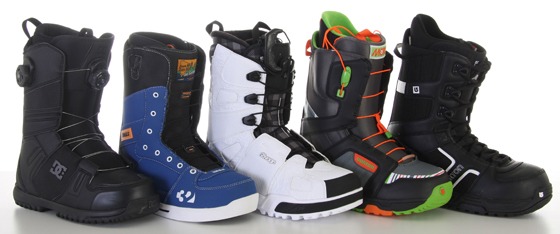
Up until the onset of souped-up boot-lacing technologies like Boa, Speed Zone, and many others, you cinched down your snowboard boots the same way you would any sneaker: by lacing them up. But getting your boots tight enough meant lace-burns on your fingers and inevitably they would fray, snap, loosen, or just come untied. After a half day of riding, your boots feel sloppy, and it’s back to torturous knot-tying again.
Like learning to walk, learning to tie your shoe-and-boot laces is a rite of passage when you’re growing up. Well, not anymore. Velcro likely marked the beginning of more efficient lacing systems on the mass market, but things have come a long way since the invention of velcro.

Boa Technology
Boa Technology entered the game about 10 years ago and now is featured throughout a slew of snowboard lines, from K2 to Ride to ThirtyTwo to Vans and many more. Boa offers many things traditional lacing cannot, like micro “one-click” adjustability and the ability to independently tighten your lower and upper boot. You essentially step into the boot and spin the dial(s) until reaching optimal fit. The beauty of Boa is that you can adjust it on the fly, ie. you’re literally one click away from a tighter or looser fit. Boa provides a smooth, even closure and no pressure points.

Need for Speed
Outside of Boa, boot companies across the board have their own proprietary lacing systems, including Burton’s Speed Zone, Salomon’s Power Lace Pro and ThirtyTwo’s Fast Track system. With each of these you essentially have two rip cords with which you can independently tighten the lower and upper boot. Once you reach optimal fit, there is typically a “lock” of some sort which, when engaged by running the lace through it, will hold the lace tension in place. Now that the boots are cinched to your specifications, take the excess lacing and pull tab, and tuck the tab into the built-in “hideaway” slot or clip it to the upper cuff of the boot. The lacing stash will be different for each brand but serves the same purpose—securing the laces and keeping the excess out of your way.

Of course, there are boots that still feature traditional laces, but we’re not going to teach you how to tie your shoes if you don’t already know…









